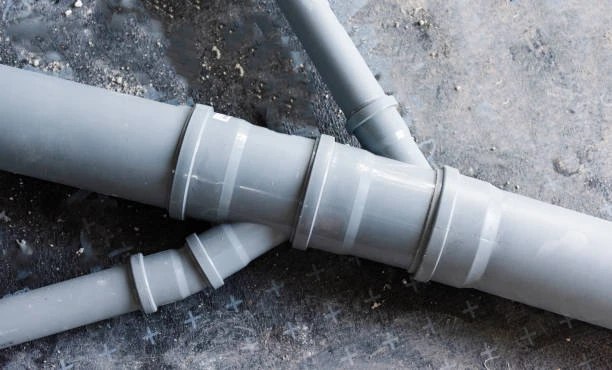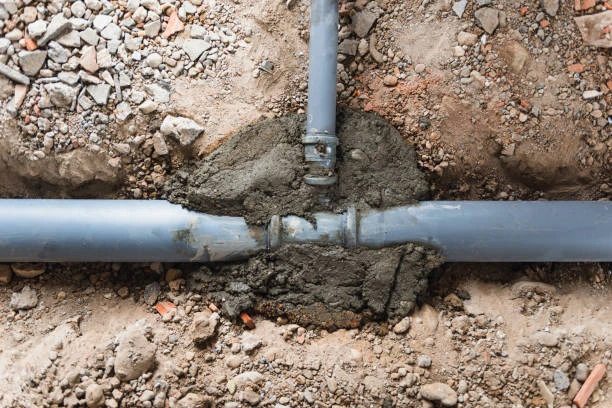The PVC pipe industry is expect to experience significant volume growth of 13-15% in the upcoming fiscal year, as reported by Crisil. This anticipated growth can be attribute to various factors, including increase construction activities, a surge in demand for plumbing solutions, and the rising popularity of CPVC (Chlorinated Polyvinyl Chloride) fittings. As an essential component in plumbing systems, CPVC fittings are gaining traction due to their unique advantages over traditional materials. This article will delve into the key attributes of CPVC fittings, their applications, and the role they play in the burgeoning PVC pipe market.
Understanding CPVC Fittings
CPVC fittings are design to connect pipes in plumbing systems, enabling the distribution of both hot and cold water. Unlike standard PVC, which is primarily use for cold water applications, CPVC fittings can withstand higher temperatures, making them ideal for a variety of residential and commercial uses.
Key Benefits of CPVC Fittings
- Superior Heat Resistance: CPVC fittings can handle temperatures up to 200°F (93°C). This characteristic makes them suitable for hot water systems, offering a reliable solution for residential plumbing and industrial applications.
- Chemical Resistance: CPVC exhibits excellent resistance to a wide range of chemicals, ensuring longevity in industrial environments where exposure to harsh substances is common.
- Longevity: With a lifespan exceeding 50 years, CPVC fittings require less frequent replacement, leading to reduced maintenance costs and increased reliability.
- Ease of Installation: The lightweight nature of CPVC fittings allows for easier handling and installation. This results in lower labor costs and faster project completion timelines.
Factors Driving Growth in the PVC Pipe Market
The projected growth of 13-15% in volume for PVC pipe makers is influenced by several factors:
1. Increased Construction Activities
The ongoing urbanization and infrastructure development projects globally are driving demand for reliable plumbing solutions. CPVC fittings are increasingly being preferred for new constructions due to their robustness and versatility.
2. Rising Demand for Water Supply Systems
As water scarcity becomes a pressing issue in many regions, efficient plumbing systems are essential. CPVC fittings’ ability to maintain water quality and deliver safe drinking water is propelling their adoption in both residential and commercial sectors.
3. Sustainability Initiatives
With growing awareness surrounding environmental sustainability, builders and consumers are more inclined towards materials that contribute to energy efficiency and sustainability. CPVC fittings help minimize water waste and have a lower environmental impact during their lifecycle.
4. Regulatory Support
Government regulations favoring the use of safer and more efficient plumbing materials are also prompting a shift towards CPVC fittings. Compliance with safety standards ensures that these products can be use in a variety of applications without compromising quality.
The Role of CPVC Fittings in Plumbing Systems
CPVC fittings serve various purposes in plumbing systems, enhancing their overall performance and reliability. Here are some key applications:
1. Residential Plumbing
In residential settings, CPVC fittings are commonly use for hot and cold water supply lines, ensuring efficient distribution throughout the home. Their durability and heat resistance make them a popular choice among homeowners and plumbing contractors.
2. Commercial Applications
In commercial buildings, CPVC fittings are utilize for larger plumbing systems, including those that handle high-temperature fluids. Their chemical resistance also makes them suitable for industrial applications, where exposure to corrosive substances is a concern.
3. Fire Sprinkler Systems
CPVC fittings are increasingly being used in fire sprinkler systems due to their ability to withstand high temperatures and pressures. This makes them a reliable option for ensuring safety in commercial and residential buildings.
Innovations in CPVC Technology

The CPVC fitting market is witnessing continuous innovation aimed at improving product quality and performance. Manufacturers are investing in research and development to create advanced CPVC formulations that enhance durability and resistance to environmental factors.
1. Enhanced Joint Technologies
New joint technologies are being developed to ensure leak-proof connections, minimizing the risk of water loss and improving system efficiency. These innovations contribute to the overall reliability of plumbing systems.
2. Eco-friendly Production Methods
Manufacturers are adopting eco-friendly production practices to reduce the carbon footprint associated with CPVC fitting production. This aligns with global sustainability goals and enhances the appeal of CPVC fittings to environmentally conscious consumers.
Conclusion
The PVC pipe industry is poise for remarkable growth, driven by factors such as increase construction activities, rising demand for efficient plumbing solutions, and a focus on sustainability. CPVC fittings stand out as a crucial component within this landscape, offering numerous advantages that cater to both residential and commercial needs. As the industry continues to innovate and adapt to changing market demands, CPVC fittings are likely to play an integral role in shaping the future of plumbing systems.

Frequently Asked Questions (FAQs)
1.What are CPVC fittings used for?
- CPVC fittings are use to connect pipes in plumbing systems, enabling the distribution of both hot and cold water.
2.How long do CPVC fittings last?
- CPVC fittings have a lifespan of over 50 years when properly installed and maintained.
3.Are CPVC fittings safe for drinking water?
- Yes, CPVC fittings are approve by regulatory bodies for use in drinking water systems, ensuring they meet safety standards.
4.What temperature can CPVC fittings withstand?
- CPVC fittings can handle temperatures up to 200°F (93°C), making them suitable for hot water applications.
5.Can CPVC fittings be recycled?
- Yes, many manufacturers offer recycling programs for CPVC fittings, contributing to sustainability efforts.


















